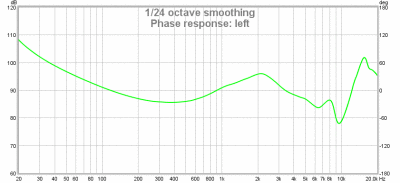XTZ EarPhone-12 is designed with an appropriate philosophy in mind:
IOW, unlike other random IEM companies, the manufacturer actually employees a conventional ear simulator for calibrating their products. As such practice is essential for making an accurate, high-quality headphones, it can be assumed that XTZ certainly know what they're doing.
And most importantly, in collaboration with Dirac, XTZ provide an iOS app dedicated for EarPhone-12. XTZ According to the manufacturer, the app yields:
- An improved soundstage
- Clearer voices
- A tighter and deeper bass reproduction
- Improved timbre
- Perfect Balanced Sound
Since Dirac's HD technology has been proven to be very legit, a huge improvement in sound quality can be expected.
PRO: Warm decaying bass & low distortion. The proprietary iOS app does a great wonder, turning the IEM into a giant-killer.
CON: Short bandwidth & slight channel mismatch in the low frequency range, which can be fixed by adjusting the top vent.
ON SECOND THOUGHT #1: Acoustic output impedance of XTZ EarPhone-12 is quite high; The deeper the insertion depth, the better the high frequency extension.
ON SECOND THOUGHT #2: Additional acoustic resistance attenuates the mid-range.
ON SECOND THOUGHT #3: None of the vents are depressurizers, which means there's a diaphragm flex whenever the IEM is inserted into the ear canal. And as mentioned above, adjusting the top vent brings down the amplitude below 1 kHz, and compensates any deviation caused by manufacturing error. If there's any low-frequency mismatch, simply block the top vent with a duct tape, create a pin hole on it, and adjust the size of the hole until both channels are equally matched.
And while the app neither corrects nor optimizes the transient characteristic of the IEM., it keeps the stock response largely intact, which can only be realized by using a high-resolution DSP.
ON SECOND THOUGHT #5: Once XTZ Player kicks in, XTZ EarPhone-12 becomes closer to the Hi-Fi reference suggested by Dr. Sean Olive of Harman.













So this is only good if you have idevice with ios as your DAP?
ReplyDeleteThe app is only available on iOS, unfortunately. One may extract an impulse response of XTZ Player to run it on a PC or a V4A-enabled android phone, but that is beyond what I'd do.
Delete